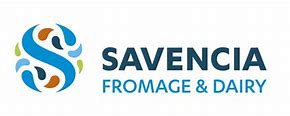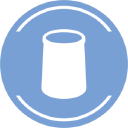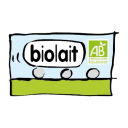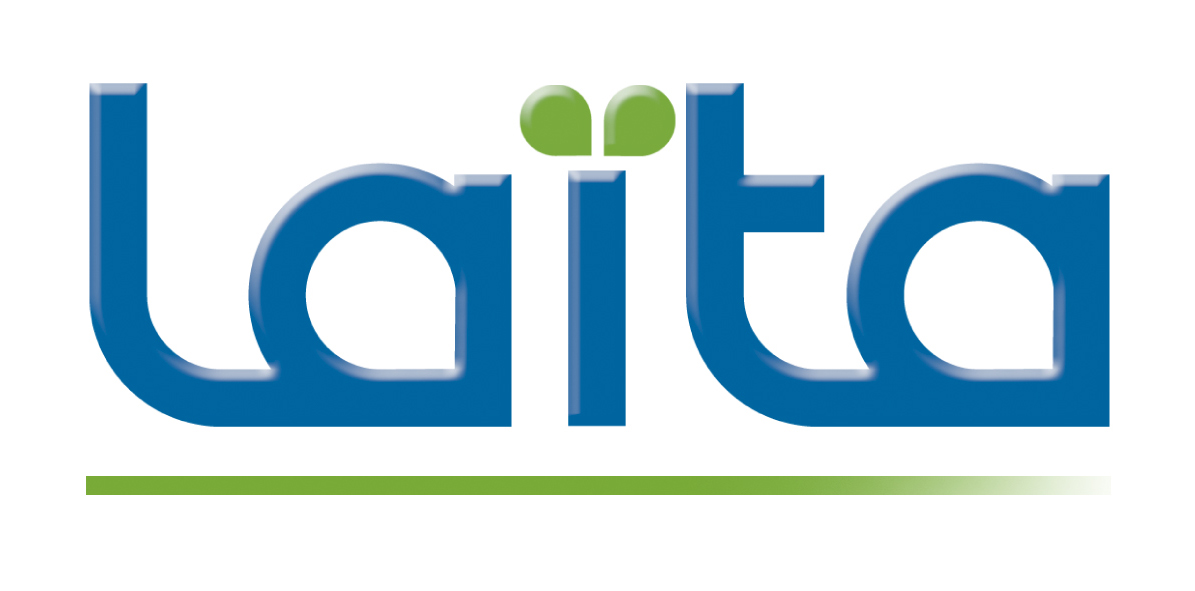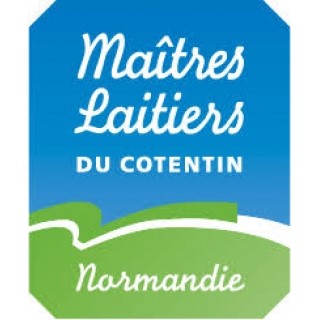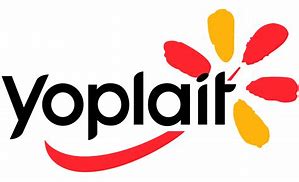Summary
The global dairy products market, valued at €827.89 billion in 2022, is experiencing growth with an expected CAGR of 6.40% leading up to 2030, indicating a dynamic industry. The French market parallels this trend, witnessing a value increase in sales from €15.83 billion in 2018 to €18.50 billion in 2022 despite a modest 1.83% drop in milk volume sales between 2018 and 2022. Consumption patterns show that packaged milk, ultra-fresh products, and cheese dominate with annual average consumptions of 76.4 liters, 58.2 kg, and 29.2 kg per inhabitant respectively. French foreign trade of dairy products has also seen growth, with exports climbing from €6.94 billion in 2018 to €8.87 billion in 2022. However, imports saw an even greater increase, from €4.02 billion in 2018 to €5.86 billion in 2022, resulting in a slight decrease in the trade coverage ratio from 172.64% to 151.37%.
Notably, since 2020, there has been a decline in demand for organic dairy products, demonstrated by a consecutive annual fall in organic milk and yogurt purchases after 2018, by as much as -11% and -7% respectively. This indicates a shift in consumer preference, possibly due to the high cost of organic products and a crisis of confidence in the organic label, exacerbated by current inflation. Despite these challenges, the industry has shown adaptability with the introduction of plant-based alternatives and lactose-free products, witnessing a 5% increase in sales of plant-based yogurts from 2020 to 2022.
Navigating the Flux: Trends in Dairy Consumption in France
In recent years, the French dairy market has undergone a series of shifts reflective of broader global trends as well as specific national regulatory changes. While the overall value of dairy product sales witnessed an upward surge reaching approximately between €15 and €20 billion between 2018 and 2022, the volume of milk sales saw a slight dip of nearly 2% in the same timeframe. This signals a scenario where price hikes in the dairy sector are perhaps outpacing the physical volume of products consumed by the population.
Despite these fluctuations, the French remain steadfast consumers of dairy, with packaged milk leading the ranks at an average annual per capita consumption of between 70 and 80 liters. Not far behind, ultra-fresh dairy products and cheese claim their spots with average consumptions of approximately between 50 and 60 kg, and between 25 and 30 kg per capita per year respectively.
However, the market for organic dairy has not shared this robust performance. A notable decline was seen in organic product sales volume across the board, with a drop ranging from around 5% to over 15% when looking at year-on-year comparisons. Organic dairy items like animal milk and yogurts, though holding market shares ranging from approximately 4% to 9%, have seen a sharp fall in purchases between 2016 and 2022.
The French consumer preferences in terms of dairy brands shine a spotlight on the diversity within the market, with market leaders like La Laitière in yogurts, Président in butter, and Boursin in cheese reflecting an approval rating over 70%. However, for milk, the competition is closer with Lactel leading slightly ahead of Candia in terms of consumer preference.
The abolition of milk quotas in 2015 was a significant turning point in the industry, leading to increased milk production but also intensifying competition, impacting prices, and prompting farmers to consolidate for greater market influence. Meanwhile, the 2018 Egalim Law aimed to improve farmers' remunerations, which in turn led to a notable 10% rise in the value of contracts in downstream price negotiations.
In a market that prides itself on both tradition and innovation, dairy producers are increasingly embracing diversification to cater to a changing consumer base. Plant-based alternatives, such as yogurts, have seen growth, albeit moderate, indicating an evolving palate among French consumers.
Key Dairy Industry Stalwarts Shaping the French Dairy Landscape
The French dairy market is a vibrant sector characterized by a handful of dominant players that have etched their names into the culinary fabric of the country. These companies exert significant influence over the market through a diverse array of products that cater to both traditional tastes and modern, health-conscious preferences.
Lactalis: Envisioned as the titan of the cheese kingdom, Lactalis sits atop the hierarchy of dairy producers. With an impressive arsenal that spans across fluid milk, fresh products, and cheeses, they have cemented their status as a private group powerhouse. Their brand resonates with quality and tradition, serving as a standard in households and fine dining establishments alike.
Danone: A name synonymous with health and wellness, Danone is more than just a food brand; it's a manifesto of lifestyle choices promoting nutritious and balanced eating. Their portfolio, enriched with fluid milk and a wide range of fresh dairy products, reflects a dedication to nourishment and a better life through food. As a private entity, Danone continues to innovate while staying true to its mission of bringing health through food to as many people as possible.
Savencia: Renowned for their gourmet touch in the dairy domain, Savencia is not just a producer; they are purveyors of fine taste. Their expertise straddles across milk, fresh products, and a delightful selection of cheeses, underlining their commitment to taste and a sensory experience. As a private group, Savencia stands out for their distinct products that grace the tables of those with a penchant for finely crafted dairy delights.
Sodiaal: A cooperative group that personifies the unity of farmers and the value of collective effort. As a key player in the industry, Sodiaal offers a spectrum of products, including fluid milk, fresh items, and cheeses that embody the rich dairy heritage of France. Their cooperative model emphasizes the importance of fair remuneration for farmers and a sustainable approach to dairy production.
Together, these market leaders not only provide a significant portion of the French dairy intake but also play pivotal roles in shaping consumer preferences and setting industry standards. They are the sentinels and innovators of dairy in France, navigating the delicate balance between tradition and modernity, quality and variety, to serve the ever-evolving palates of their customers.
to understand this market
Detailed content
 Inforamtion
Inforamtion
- Number of pages : 30 pages
- Format : Digital and PDF versions
- Last update : 08/04/2024
 Summary and extracts
Summary and extracts
1 Market overview
1.1 Market overview and definition
Dairy products, also known as milk products, refer to food products derived from milk or made from it . Most of the time, these products are made from cow's milk, but other types of milk can also be used, such as raw goat's milk, sheep's milk, camel milk, yak milk, buffalo milk, etc., depending on the situation.
There are two product categories. On the one hand, finished products such as liquid milk, cheeses, creams, butters, yoghurts and dairy desserts, which are intended for mass consumption and out-of-home catering (canteens, hotels, etc.). On the other hand, there are intermediate products such as dry ingredients and products derived from milk, like milk powders or proteins, which are destined for the food industry.
Dairy products, at the heart of our daily diet, are renowned for their taste and nutritional qualities. The calcium, phosphorus, magnesium, proteins and vitamins they contain are essential for healthy growth, healthy bones and teeth, sports recovery, healthy intestinal flora and reduced cardiovascular risks.
The NAF codes concerned are
- 10.51A "Manufacture of liquid milk and fresh products".
- 10.51B "Manufacture of butter
- 10.51C "Manufacture of cheese
- 10.51D "Manufacture of other dairy products".
The global market is dynamic and growing, and should continue to do so over the next few years, with a CAGR of 6.40% up to 2030. The European Union is the world's leading producer of dairy products, with a market share of 35% in January 2024.
The French market has also been enjoying positive growth for several years, with sales increasing in value terms. However, a slight drop of 1.83% in volume sales is observed between 2018 and 2022, underlining an increase in prices for these products. Market professionals need to adapt to changes in demand and the various factors influencing the market, such as the availability of cow's milk.
1.2 A growing global market by 2030
The global dairy products market is dynamic and growing, valued at ***.** billion euros in ****, and should continue to do so until ****. Indeed, the global dairy products market is expected to reach $****.** billion in ****, with a CAGR of *.**% over the period ****-****.
Sales trends World, ****-****, in billions of dollars Source: ****
Global ...
1.3 French market sees sales increase in value terms
Market size trends for dairy products France, ****-****, in billions of euros Source: ****
Sales trends for the dairy products market in France between **** and **** reveal a positive trend, marked by steady growth over this period. Total sales have risen significantly, from €**.** billion in **** to €**.** billion in ****, an increase of **.**%
This steady ...
1.4 Trends in French foreign trade
Balance of trade in dairy products France, ****-****, in billions of euros Source: ****
Exports have grown steadily over this period, rising from €*.** billion in **** to €*.** billion in ****, an increase of **.**%.This increase underlines the competitiveness of French dairy products on the international market and their attractiveness to foreign consumers.
On the ...
2 Demand analysis
2.1 Profile of the French dairy consumer
Breakdown of milk purchases in volume by region France, ****, %, %, %, %, %, %, %, %, %, %, %, % Source: ****
The Western region stands out as the main milk consumer, accounting for **.*% of total purchases, followed by the Paris region with a **.*% share.
The Centre Est and Sud Est regions also show significant volumes, accounting for **.*% and **. *% of purchases respectively. On ...
2.2 Consumption of dairy products
Per capita consumption of dairy products per year France, ****, in kg or liters Source: ****
Per capita consumption of dairy products in France in **** varies according to product category. The data reveal thatpackaged milk is the most consumed dairy product, with an annual average of **.* liters per inhabitant. Ultra-fresh products follow closely ...
2.3 France's favorite dairy brands
Favorite yogurt brands :
Favorite yogurt brands France, February ****, in Source: ****
La Laitière dominates the market with an **.*% approval rating, closely followed by Danone and Yoplait, with scores of **.*% and **% respectively. These three brands clearly stand out from their competitors in terms of popularity with French consumers.
Brands such as Taillefine, ...
2.4 Declining demand for organic dairy products
The growth of organic products has been a major trend in the food industry in recent years, with organic dairy products occupying a prominent place among them. However, recent observation has revealed a noticeable drop in demand for these products. This decline in interest in organic dairy products is not an ...
3 Market structure
3.1 Value chain
Source: ****
The dairy value chain begins with the production of milk (***), or they may sell them directly to dairy product manufacturers.
Some manufacturers have to buy in from semi-finished product manufacturers, if they don't have the capacity to manufacture themselves certain products needed for the production of dairy products, such as ...
3.2 Number of companies and number of employees
Several NAF codes correspond to the various dairy products:
**.**A "Manufacture of liquid milk and fresh products **.**B "Manufacture of butter **.**C "Manufacture of cheese **.**D "Manufacture of other dairy products".
These different NAF codes are therefore taken into account in the data below.
Number of establishments producing dairy products France, ...
3.3 Distribution of dairy products mainly through supermarkets
Breakdown of sales volumes by distribution channel France, ****, % sales Source: ****
The breakdown of volume sales of dairy products by distribution channel in France in **** shows a clear predominance of generalist channels, accounting for the vast majority of shares in all product categories. Indeed, these generalist channels capture around **% of sales of ...
3.4 A market impacted by reduced availability of cow's milk
Cow's milk collection France, ****- ****, in billion liters Source: ****
Between **** and ****, cow's milk collection in France showed a stable trend overall, but with a slight decrease. Between **** and ****, there was a *% decrease in cow's milk collection. Dairy cow herd France, ****-****, in millions of cows Source: ****
The number of dairy cows ...
3.5 A concentrated market with Lactalis and Danone in the lead
The French dairy products market is highly competitive on a European and global scale, but relatively concentrated in France. Thetwo French giants, Lactalis and Danone , have been battlingit out through innovation and mergers & acquisitions, although Savencia and Sodiaal have achieved significant results.In ****, for example, Danone acquired Follow Your Heart, the ...
4 Offer analysis
4.1 The different types of dairy products
Dairy products are made up of different products, the main ones being: packaged milk, i.e. milk in bottles; packaged cream, often in bricks; solid fats, ultra-fresh products and cheeses. All these products can be further segmented according to their different forms and tastes. The following table summarizes the different types ...
4.2 Price analysis
Trend in annual consumer prices for packaged milk France, ****, index Source: ****
The packaged milk price index, set at *** in ****, has risen to ***.* in ****. The increase was rather gradual from **** to ****, rising from *** to ***.*. Then there was a significant rise between **** and ****, with the index increasing by *.* points.
This steady increase reflects ...
4.3 Offer diversification through innovation
The dairy products market is a vast one, encompassing many products, both original and processed. One of the major challenges for alternative dairy brands is to succeed in diversifying their product offering to adapt to new demands.
Over the last ten years, the sector has undergone a veritable revolution, with the ...
5 Regulations
5.1 The abolition of milk quotas in 2015
Milk quotas, in force between **** and ****, were abolished on *st april ****. The aim of abolishing quotas is twofold. Firstly, it reflects the European Union's desire to disengage from the management of domestic agricultural markets. Prices, which will henceforth be deregulated, will be set according to the balance between supply and demand. ...
5.2 The Egalim Law in 2018
In October ****, a food law, known as Egalim, the result of the États généraux de l'alimentation, was passed. It aims for a better distribution of value between producers, industrialists and distributors, which requires "fair remuneration for farmers to enable them to live with dignity from their work" . In particular, ...
6 Positioning the players
6.1 Segmentation
- Savencia Fromage & Dairy groupe
- La Fermière
- Even Groupe
- Lactalis Groupe
- Biolait
- Laïta Regilait
- Les Maitres Laitiers du Cotentin
- Danone Groupe
- Yoplait France (Sodiaal Groupe)
- 56 le marché du lait et des produits laitiers en France
- Sill Entreprises
- LSDH Laiterie de Saint Denis de l'Hôtel - L'Abeille
 List of charts
List of charts
- World milk production by country
- Sales trend
- Sales of milk by value
- Sales volume of milk
- Trends in the size of the dairy products market
All our studies are available online in PDF format
Take a look at an example of our research on another market!
Latest news
Companies quoted in this study
This study contains a complete overview of the companies in the market, with the latest figures and news for each company. :
 Choosing this study means :
Choosing this study means :
Access to more than 35 hours of work
Our studies are the result of over 35 hours of research and analysis. Using our studies allows you to devote more time and added value to your projects.
Benefit from 6 years' experience and over 1,500 industry reports already produced
Our expertise enables us to produce comprehensive studies in all sectors, including niche and emerging markets.
Our know-how and methodology enable us to produce reports that offer unique value for money.
Access to several thousand articles and paid-for data
Businesscoot has access to all the paid economic press as well as exclusive databases to carry out its market research (over 30,000 articles and private sources).
To enhance our research, our analysts also use web indicators (semrush, trends, etc.) to identify market trends and company strategies. (Consult our paying sources)
Guaranteed support after your purchase
A team dedicated to after-sales service, to guarantee you a high level of satisfaction. +44 238 097 0676
A digital format designed for our users
Not only do you have access to a PDF, but also to a digital version designed for our customers. This version gives you access to sources, data in Excel format and graphics. The content of the study can therefore be easily retrieved and adapted for your specific needs.
 Our offers :
Our offers :
the Milk Market | France
- What are the figures on the size and growth of the market?
- What is driving the growth of the market and its evolution?
- What is the positioning of companies in the value chain?
- Data from several dozen databases
Pack 5 études (-15%) France
- 5 études au prix de 75,6€HT par étude à choisir parmi nos 800 titres sur le catalogue France pendant 12 mois
- Conservez -15% sur les études supplémentaires achetées
- Choisissez le remboursement des crédits non consommés au terme des 12 mois (durée du pack)
Consultez les conditions du pack et de remboursement des crédits non consommés.





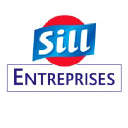 Breton company Sill ready to take over Knorr liquid soups - 01/03/2024
Breton company Sill ready to take over Knorr liquid soups - 01/03/2024
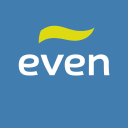 A2S and Sovéfrais merge to form So Breizh | A2S and Sovéfrais merge to form So Breizh - 01/03/2024
Even Distribution merges two companies, SovéFrais and A2S, to create So Breizh.
So Breizh is based in two locations: Ploudaniel (Finistère) and Kervignac (Morbihan).
The company specializes in the distribution of fresh and frozen produce.
The Even Distribution cooperative relies on Krill, a network of 8 SME suppliers, including Gastronomie Service, Gel 43, Prenot Guinard and So Breizh.
So Breizh has two order preparation warehouses, 7 delivery outlets and a fresh meat cutting plant.
The company serves 5,000 catering and convenience store customers.
So Breizh has sales of 97 million euros.
A2S and Sovéfrais merge to form So Breizh | A2S and Sovéfrais merge to form So Breizh - 01/03/2024
Even Distribution merges two companies, SovéFrais and A2S, to create So Breizh.
So Breizh is based in two locations: Ploudaniel (Finistère) and Kervignac (Morbihan).
The company specializes in the distribution of fresh and frozen produce.
The Even Distribution cooperative relies on Krill, a network of 8 SME suppliers, including Gastronomie Service, Gel 43, Prenot Guinard and So Breizh.
So Breizh has two order preparation warehouses, 7 delivery outlets and a fresh meat cutting plant.
The company serves 5,000 catering and convenience store customers.
So Breizh has sales of 97 million euros.
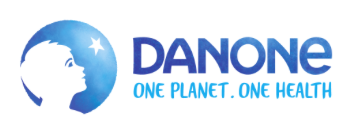 Danone opens a second plant for plant-based products in France - 12/02/2024
Danone opens a second plant for plant-based products in France - 12/02/2024
 Suppliers refuse to accept Lactalis' proposed milk price increase - 05/02/2024
Suppliers refuse to accept Lactalis' proposed milk price increase - 05/02/2024
